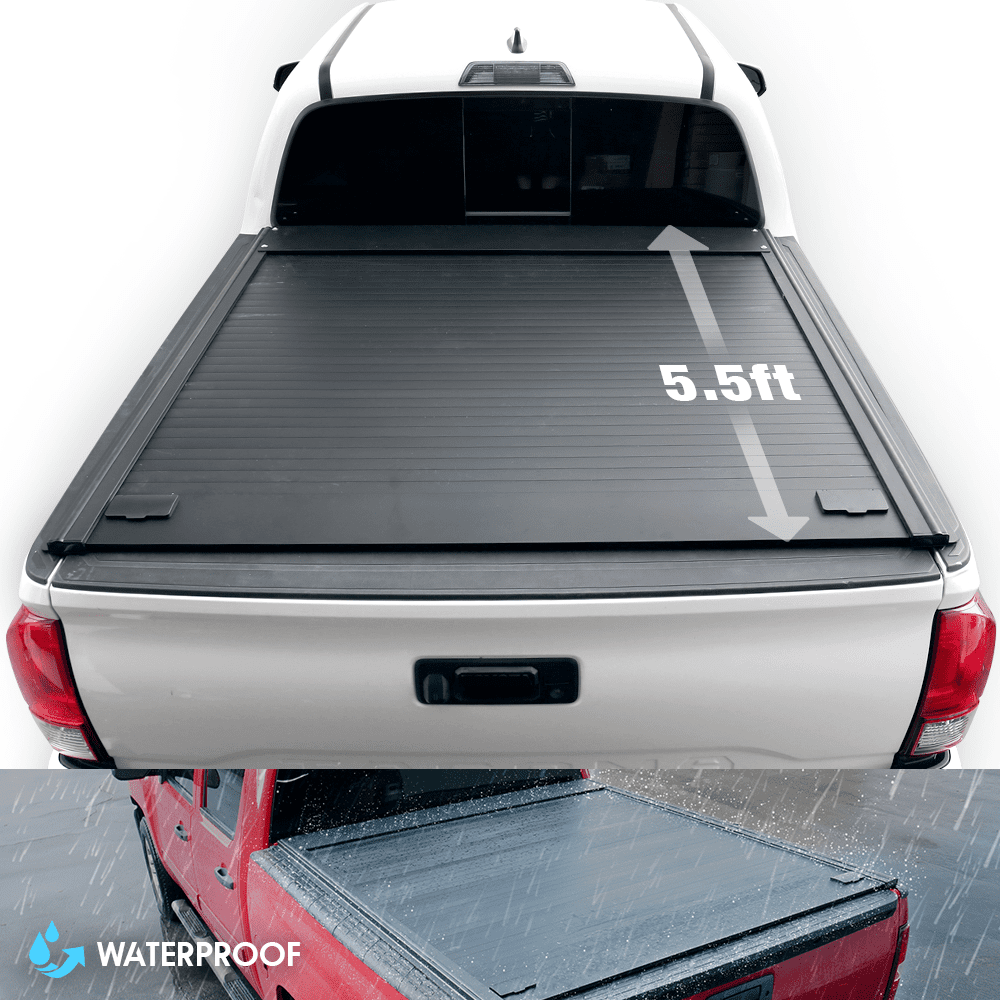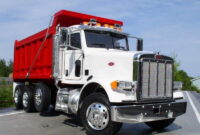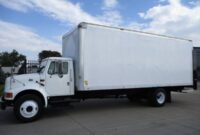Roll Up Bed Covers For Trucks: The Ultimate Guide to Versatility and Protection pickup.truckstrend.com
Trucks are the quintessential workhorses of the automotive world, relied upon by millions for everything from hauling tools and equipment to transporting groceries and camping gear. While their open beds offer unparalleled utility, they also expose valuable cargo to the elements, theft, and the prying eyes of passersby. Enter the roll-up bed cover – a remarkably versatile and popular accessory that seamlessly blends protection, security, and convenience. Far more than just a tarp, modern roll-up bed covers transform your truck bed into a secure, weather-protected compartment, all while maintaining the truck’s rugged aesthetic and improving its efficiency.
In this comprehensive guide, we’ll delve deep into the world of roll-up bed covers, exploring their benefits, the different types available, key considerations for choosing the right one, installation tips, maintenance advice, and much more. Whether you’re a seasoned truck owner looking for an upgrade or a newcomer seeking to enhance your vehicle’s functionality, this article will equip you with all the knowledge you need to make an informed decision.
Roll Up Bed Covers For Trucks: The Ultimate Guide to Versatility and Protection
What Are Roll-Up Bed Covers?
At its core, a roll-up bed cover is a flexible tonneau cover designed to cover the open bed of a pickup truck. Unlike rigid one-piece or folding covers, roll-up covers are characterized by their ability to literally "roll up" towards the cab, providing full and unobstructed access to the truck bed. They typically consist of a durable fabric or vinyl material, or a series of interconnected aluminum slats, supported by a frame that attaches to the truck’s bed rails.
The beauty of the roll-up design lies in its simplicity and efficiency. When rolled out, the cover lies flat and taut, protecting the cargo beneath. When full bed access is needed, it can be quickly rolled back and secured, often with Velcro, snaps, or an integrated latching system, without the need to remove the entire cover. This makes them a highly practical solution for truck owners who frequently switch between hauling large items and needing covered storage.
The Unrivaled Benefits of Roll-Up Bed Covers
The popularity of roll-up bed covers isn’t accidental; it’s a direct result of the myriad advantages they offer.
- Superior Cargo Protection: The primary function of any truck bed cover is to protect what’s inside. Roll-up covers excel at this, shielding your cargo from rain, snow, hail, dust, dirt, and harmful UV rays. This is crucial for anything from sensitive tools to camping gear, ensuring your belongings arrive at their destination in the same condition they left.
- Enhanced Security: While not impenetrable, a roll-up cover acts as a significant deterrent to casual theft. By concealing your cargo, it removes the temptation for opportunistic thieves. Many models incorporate locking mechanisms or require the tailgate to be open to access the latches, adding another layer of security.
- Improved Fuel Efficiency: An open truck bed creates aerodynamic drag as air gets trapped and swirls around inside. Covering the bed with a taut roll-up cover streamlines the truck’s profile, reducing drag and potentially improving fuel economy by a small but noticeable percentage (often 5-10% in highway driving). Over the lifespan of your truck, these savings can add up.
- Full Bed Access on Demand: This is arguably the most significant advantage over many other cover types. Unlike hard folding covers that might block a portion of the rear window or retractable covers that consume bed space in a canister, a roll-up cover completely clears the bed. Need to haul a refrigerator or a dirt bike? Simply roll it up and secure it, and you have 100% of your bed space available.
- Ease of Use: Most roll-up covers are designed for quick and easy operation, often requiring just one hand to open or close. The rolling mechanism is smooth and intuitive, making daily use a breeze.
- Affordability: Generally, soft roll-up covers are among the most budget-friendly tonneau options, offering excellent value for their protective and functional benefits. Even hard roll-ups, while more expensive than their soft counterparts, often represent a good balance between security and cost.
- Sleek Aesthetics: When closed, a roll-up cover provides a clean, low-profile look that enhances the appearance of any truck. It gives the truck a finished, refined look, concealing the often-cluttered bed.


Types of Roll-Up Bed Covers
While the core concept remains the same, roll-up covers come in two primary categories, each with distinct characteristics:
1. Soft Roll-Up Covers
- Material: Typically made from heavy-duty vinyl or marine-grade fabric that is UV-resistant and tear-resistant.
- Mechanism: These covers attach to the bed rails via a frame. The cover itself usually secures with Velcro strips along the rails, or with a snap system. When rolled up, they are often held in place with straps or buckles near the cab.
- Pros:
- Most Affordable: They offer the best value for basic protection and full bed access.
- Lightweight: Easy to handle and don’t add significant weight to the truck.
- Very Easy to Roll: Simple, quick operation.
- Fullest Bed Access: When rolled, they occupy minimal space.
- Cons:
- Less Security: While they deter casual theft, they can be cut with a sharp object. They offer minimal impact resistance.
- Durability: While robust, they are more susceptible to cuts or punctures than hard covers.

2. Hard Roll-Up Covers
- Material: These covers feature a series of interconnected aluminum or composite slats, often laminated with a durable vinyl or fabric top layer. This gives them the appearance of a soft cover but the rigidity of a hard cover.
- Mechanism: The slats are hinged together, allowing them to roll up over each other towards the cab. They typically have a more robust latching system and may incorporate a canister near the cab (though most "roll-up" hard covers are designed to stack rather than retract into a canister like true retractable covers).
- Pros:
- Enhanced Security: The hard slats provide significantly better security against forced entry and cutting compared to soft covers.
- Increased Durability: More resistant to impacts, heavy snow loads, and sharp objects.
- Still Offers Full Bed Access: Like soft covers, they roll up to clear the entire bed.
- Better Weather Sealing: Often have more sophisticated sealing systems due to their rigid structure.
- Cons:
- More Expensive: Higher price point than soft roll-ups due to material and construction.
- Heavier: The added weight of the slats can make them a bit heavier to operate and install.
- Bulkier When Rolled: While they offer full access, the rolled-up bundle of slats can be larger than a soft cover bundle.
Key Features and Considerations When Choosing
Selecting the right roll-up bed cover involves more than just picking a type. Here are critical factors to consider:
- Material Quality: For soft covers, look for marine-grade vinyl or fabric with good UV resistance to prevent fading and cracking. For hard roll-ups, assess the gauge and quality of the aluminum slats and their lamination.
- Mounting Style:
- Inside-the-Rail Mount: The cover’s rails mount inside the truck bed rails, leaving the top of the bed rails exposed. This is ideal if you plan to use stake pocket accessories (like ladder racks or tie-downs) or bed rail caps.
- Top-of-the-Rail Mount: The cover’s rails sit on top of the truck bed rails, providing a very low-profile look. This style may interfere with some bed rail accessories.
- Sealing System: Effective weather stripping around the perimeter and integrated drain tubes (especially for hard roll-ups) are crucial for keeping water out. No cover is 100% waterproof, but good sealing minimizes leaks.
- Tension System: A good tension system keeps the cover taut, preventing flapping at highway speeds and improving water runoff. Some covers have manual adjusters, while others feature automatic tensioning.
- Latch/Locking Mechanism: Evaluate the security of the latches. Some require the tailgate to be opened, while others have independent locking mechanisms.
- Installation: Most roll-up covers are designed for DIY installation with basic hand tools. Check reviews and manufacturer instructions for ease of installation. If you’re not comfortable, professional installation is an option.
- Compatibility: Ensure the cover is specifically designed for your truck’s make, model, year, and bed length. A precise fit is essential for proper function and aesthetics.
- Warranty: A strong warranty (e.g., 3-5 years or lifetime) indicates manufacturer confidence in the product’s durability and quality.
Installation Guide: Getting Your Roll-Up Cover On
While specific steps vary by manufacturer, installing a roll-up bed cover is generally a straightforward process that most truck owners can complete in an hour or two.
- Preparation: Start by thoroughly cleaning the truck bed rails where the cover will mount. Any dirt or debris can compromise the seal or fit.
- Assemble the Rails: Many covers come with side rails that need to be attached to the main header or canister assembly (for some hard roll-ups). Follow the instructions carefully.
- Mount the Rails: Place the assembled rail system onto the truck bed rails. Most systems use clamps that attach to the underside of your truck’s bed rails. Tighten these clamps securely, ensuring the rails are straight and evenly spaced.
- Attach the Cover: Slide or clip the cover onto the rail system. This typically involves aligning pins or channels.
- Adjust Tension: For soft covers, you’ll need to adjust the tension to ensure the vinyl is taut and wrinkle-free. This often involves adjusting the position of the header or a tensioning knob. A taut cover sheds water better and looks cleaner.
- Final Checks: Close the tailgate and ensure the cover latches securely. Check for any gaps or misalignments. Drive your truck and listen for any flapping or unusual noises, then re-adjust if necessary.
Tools You’ll Likely Need: A socket wrench set, Allen wrenches (often provided), and a tape measure.
Maintenance and Care for Longevity
Proper care will significantly extend the life and appearance of your roll-up bed cover.
- Regular Cleaning: Wash your cover regularly with mild automotive soap and water, just as you would wash your truck. Avoid harsh chemicals or abrasive cleaners, especially on vinyl, as they can cause damage or discoloration.
- UV Protection: For vinyl covers, periodically apply a UV protectant spray specifically designed for tonneau covers or marine vinyl. This helps prevent fading, cracking, and deterioration from sun exposure.
- Check Tension: Periodically check the cover’s tension. If it appears loose or sags, adjust it according to the manufacturer’s instructions.
- Lubricate Moving Parts: For hard roll-up covers, occasionally lubricate the hinges and latching mechanisms with a silicone spray to ensure smooth operation.
- Clear Snow and Ice: Do not let heavy snow or ice accumulate on your cover, as this can stretch or damage the material and frame. Gently brush or melt it off.
- Inspect Seals: Periodically check the weather seals around the perimeter for any signs of wear, tears, or compression that could lead to leaks.
Practical Tips for Maximizing Your Roll-Up Cover
- Secure Rolled Cover: Always use the integrated straps or buckles to secure the cover when it’s rolled open. This prevents it from flapping in the wind while driving, which can damage the cover or become a safety hazard.
- Don’t Overload Against Cover: Avoid packing cargo so high that it pushes against the underside of the cover, especially soft covers. This can cause stretching, tearing, or damage to the frame.
- Consider a Bed Mat/Liner: A bed mat or spray-in liner provides an extra layer of protection for your truck bed itself and helps prevent cargo from sliding around, which can also protect the underside of your cover.
- Check Before Long Trips: Before embarking on a long trip, quickly check that the cover is securely latched and properly tensioned to avoid issues on the road.
Potential Challenges and Solutions
While roll-up covers are reliable, you might encounter minor issues.
- Water Leaks: No cover is 100% watertight, but significant leaks can be addressed. Check that the seals are properly seated, the tension is adequate, and the drain tubes (if applicable) are clear. Sometimes, small leaks can be fixed with weather stripping or silicone sealant in problematic areas.
- Sagging/Flapping: This is usually a sign of insufficient tension. Adjust the tensioning system as per the manufacturer’s guide. For soft covers, cold weather can sometimes cause the vinyl to contract and appear tighter, while hot weather can make it seem looser.
- Fading/Cracking: This is often due to prolonged UV exposure without proper protection. Regular application of a UV protectant will mitigate this. Once cracking starts, repair kits for vinyl are available for minor damage.
- Difficulty Rolling/Unrolling: Clean the rails and ensure there are no obstructions. For hard roll-ups, check for debris between the slats and lubricate the hinges.
Roll Up Bed Covers For Trucks: Representative Price Table
It’s important to note that prices for roll-up bed covers vary significantly based on brand, specific truck make/model/year, material quality, and features. The table below provides representative price ranges and common characteristics, not exact figures. Always verify current prices with retailers.
| Category | Price Range (USD) | Common Materials | Key Features | Pros | Cons |
|---|---|---|---|---|---|
| Soft Roll-Up | $200 – $550 | Vinyl, Marine-Grade Fabric | Velcro/Snap closure, Manual tension, Clamp-on rails | Most affordable, Lightweight, Full bed access, Easy DIY install | Less secure (can be cut), Less durable against sharp objects |
| Hard Roll-Up | $550 – $1200+ | Aluminum/Composite Slats (vinyl/fabric laminated) | Interlocking slats, Enhanced latching, Drain tubes | Enhanced security, More durable, Still offers full bed access, Sleek look | More expensive, Heavier, Rolled stack can be bulkier near cab |
Note: Prices are estimates and can fluctuate. Installation costs (if professional) are extra.
Frequently Asked Questions (FAQ)
Q1: Are roll-up bed covers completely waterproof?
A1: Most roll-up covers are highly water-resistant, designed to keep the vast majority of water out. However, no truck bed cover is 100% waterproof due to the nature of truck beds and the variable fit. Minor leaks can occur in extreme weather, but a good quality cover with proper installation will offer excellent protection.
Q2: Do roll-up covers really improve gas mileage?
A2: Yes, generally. By streamlining the airflow over the truck bed, roll-up covers reduce aerodynamic drag, which can lead to a slight improvement in fuel efficiency, typically in the range of 5-10% on highway driving. The actual savings depend on driving habits and truck model.
Q3: How secure are roll-up bed covers?
A3: Soft roll-up covers offer basic security by concealing cargo and deterring opportunistic theft, but they can be cut. Hard roll-up covers, with their rigid slats, offer significantly better security, similar to a hard folding cover, making them much more resistant to forced entry and cutting. Many covers also integrate with the tailgate lock for added security.
Q4: Can I install a roll-up cover myself, or do I need professional help?
A4: Most roll-up bed covers are designed for DIY installation and can be easily installed by one person (or two for larger, heavier models) in an hour or two with basic hand tools. Manufacturers provide detailed instructions. Professional installation is always an option if you prefer.
Q5: How long do roll-up bed covers typically last?
A5: With proper care and maintenance, a good quality roll-up cover can last anywhere from 5 to 10+ years. Factors like material quality, exposure to harsh weather, and frequency of use will influence its lifespan.
Q6: Can I drive with the cover rolled up?
A6: Yes! This is one of the main advantages of roll-up covers. When rolled up and secured with the integrated straps or buckles, you can drive safely at highway speeds with full bed access.
Q7: Will a roll-up cover fit my specific truck?
A7: Roll-up covers are truck-specific. You need to purchase a cover designed precisely for your truck’s make, model, year, and bed length (e.g., 5.5 ft, 6.5 ft, 8 ft). Always double-check compatibility before purchasing.
Conclusion
Roll-up bed covers offer an exceptional blend of versatility, protection, and value for any truck owner. Whether you opt for the budget-friendly convenience of a soft roll-up or the enhanced security and durability of a hard roll-up, you’ll be investing in an accessory that significantly enhances your truck’s functionality. From safeguarding your gear against the elements and theft to contributing to better fuel economy and maintaining a sleek aesthetic, a roll-up cover is a smart addition. By understanding the different types, considering key features, and committing to simple maintenance, you can ensure your chosen cover serves you reliably for years to come, truly transforming your truck into a more capable and efficient vehicle.



